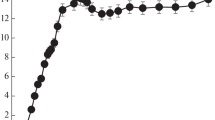Abstract.
Yarrowia lipolytica is an ascomycete with biotechnological potential. In common media, the fungus grows as a mixture of yeast-like and short mycelial cells. The environmental factors that affect dimorphism in the wild-type strain, W29, and its auxotrophic derivative, PO1a, were analyzed. In both strains, pH was the most important factor regulating the dimorphic transition. Mycelium formation was maximal at pH near neutrality and decreased as pH was lowered to become almost null at pH 3. Carbon and nitrogen sources, namely glucose and ammonium, were also important for mycelium formation; and their effect was antagonized by some alternative carbon and nitrogen sources. Citrate was an important positive effector of mycelium growth. Anaerobic stress induced formation of mycelial cells. The importance of the protein kinase A pathway was suggested by the inhibition of mycelium growth by cAMP. We propose that the interplay of these factors regulates the adaptation of the fungus, to better exploit its natural ecological niches.
Similar content being viewed by others
Author information
Authors and Affiliations
Additional information
Electronic Publication
Rights and permissions
About this article
Cite this article
Ruiz-Herrera, J., Sentandreu, R. Different effectors of dimorphism in Yarrowia lipolytica . Arch Microbiol 178, 477–483 (2002). https://doi.org/10.1007/s00203-002-0478-3
Received:
Revised:
Accepted:
Issue Date:
DOI: https://doi.org/10.1007/s00203-002-0478-3




